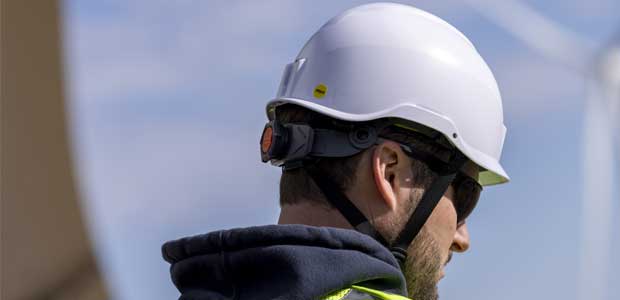
Can Safety Helmets Protect Against Dangerous Rotational Forces?
Reducing effects of overlooked angled impacts through innovative safety helmet design.
- By Tim Gallant
- Apr 01, 2022
Since 1919, the hard hat has been the most iconic symbol of worker safety. But despite more than six million hard hats and safety helmets sold each year, more than 18,000 still suffered traumatic brain injuries (TBIs) in 2019 (BLS data).
While hard hat technology has evolved tremendously over the last century, there is one thing that really hasn’t—a one-track focus on protection from direct, linear impacts. Though incredibly important, this focus has neglected the TBI-causing rotational forces that often result from more common, angled impacts.
Direct Impacts VS. Angled Impacts
To understand what an angled impact is, we first need to understand direct impact. A direct impact is, well, exactly that—a square, dead center hit to the top or sides of the head. When a perfect direct impact occurs, there is very little rotational force on the brain (more on that in a bit). Which is all fine and dandy except for that when an object, floor or beam comes toward your brain, it’s not going to give you the common courtesy of adjusting its path to hit you square on.
More frequently, the object is going to strike your head at an angled impact—introducing rapid rotational forces against the brain’s center of gravity. Unlike a concentrated compression caused by a single direct impact, rotational forces cause the brain to twist or pull in multiple directions. These shifts and rotations can cause a tearing of nerve fibers, a side effect known scientifically as brain shear.
Why Are Angled Impacts so Dangerous?
Due to the pulling and stretching of brain shear, angled impacts are actually more likely to result in traumatic brain injuries (TBIs) than direct impacts. What makes things even more concerning is the frequency at which brain shear-inducing incidents occur on the worksite. Falls, which are more likely to result in angled impact, are the most common worksite accident—and also the most common incident to result in a TBI.
As anyone who has followed the evolving saga of head trauma in professional sports knows, the effects of TBIs can be delayed, long-lasting and life-changing. In 2019 alone, there were 61,000 TBI-related deaths in the United States.
TBIs resulting from brain shear are known as closed brain injuries. Unlike an open brain injury, these occur without breaking the skull. The type of closed brain injury that most frequently occurs as a result of an angled impact is Diffuse Axonal Injury (DAI). DAI is the shearing of the brain’s long connecting nerve fibers (axons) that happen to the brain as it shifts and rotates. “Diffuse” refers to how the resulting dysfunction spreads to a widespread area throughout the brain. Often, these tears are microscopic and cannot be seen on CT or MRI scans.
This article originally appeared in the April 2022 issue of Occupational Health & Safety.